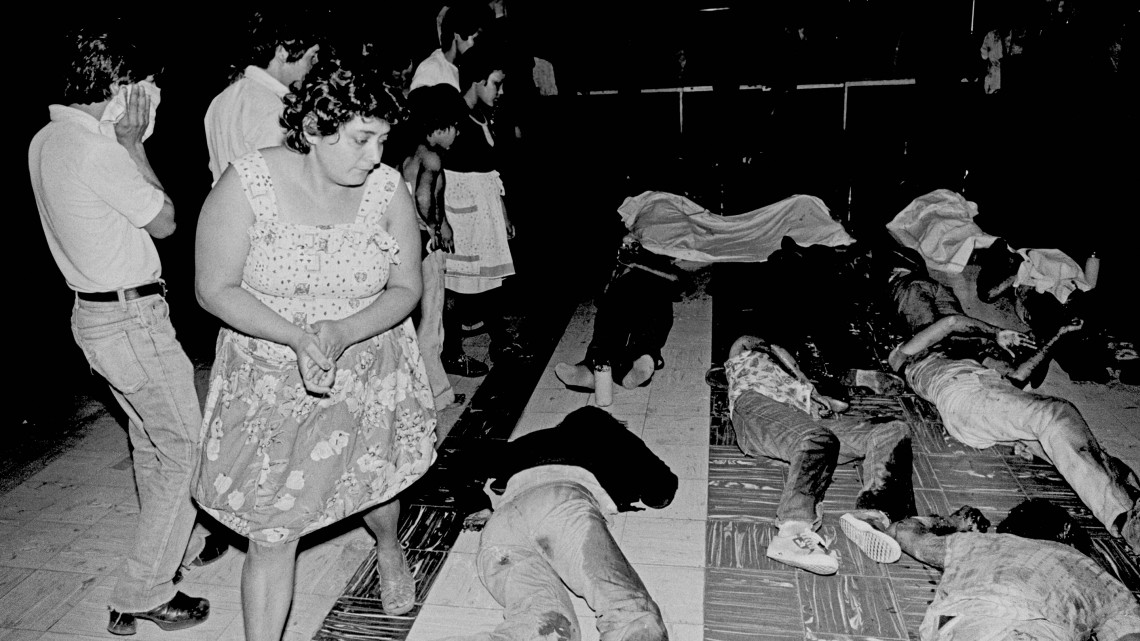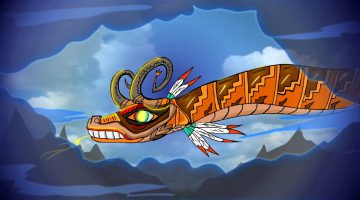On November 20th, 2014, Barack Obama, the 44th President of the United States, gave what was touted as his long overdue speech on immigration. In the typical myth-making of a master rhetorician, the president sought to create an image of a pro-immigration nation at the expense of fact. Beginning his speech by espousing a supposed 200-year-old tradition of “welcoming immigrants from around the world,” Obama sought to reframe the discussion just in time for an all-American family chitchat over the nation’s Thanksgiving meal. But as was explained in part one of this column, U.S. policy has been anything but welcoming. It has been highly selective, prejudicial, and used as a mechanism of empire-building both at home and abroad. It has to be understood that the U.S. was and is a settler-colonial nation built upon the displacement and murder of the continent’s indigenous population through famine, pestilence, slavery, and war. Manifest Destiny found its underlying foundations in an ever-expanding war policies and legal slavery.
Today, some would argue, based upon the masses in the streets protesting against the flagrant police murders of the nation’s Black population, that things haven’t changed all that much since 1864. I don’t pose this notion here flippantly: to understand the contemporary immigration drama one must understand that perpetual war is a central pillar of U.S. foreign policy, which has created a de facto refugee crisis continent wide.
U.S interventionism has been a part of wartime posturing throughout the American hemisphere from gunboat diplomacy to banana republics of the 1800s—a response to a period in which independent democratic republics arose throughout the region. This informal disposition on the use of American military power/force abroad was best encapsulated and typified in policy form as the Monroe Doctrine (1823). This was a standing document that made U.S. intervention mandatory should any foreign or sovereign power tinker and dawdle within the Latin American hemisphere, the doctrine legalized war and indemnified U.S. aggression against any form of petulant autonomy should sovereign nations try and seek independence, liberty, or self-determination anywhere on the continent.
By 1848, half of Mexico had been conquered and claimed through open conquest, diplomatic duplicity, and clandestine military operations into sovereign territory in which American citizens were the “illegals” taking up space and expropriating land from the local population. Or perhaps it was the adventurist foreign excursions at the cusp of the new century and the Spanish-American War that solidified the imperialist ambitions of a nation trying to become a global superpower. In short order, major military operations resulted in the U.S. claim over Puerto Rico, Cuba, Guam, and the Philippines to name but a few. This laid the foundations for the so-called Banana Wars (1898-1934) that additionally took U.S. military interventionism into Panama, Honduras, Haiti, Dominican Republic, Nicaragua, and Mexico at the behest of U.S. corporate monopolies over an agribusiness kept afloat through real or virtual slave labor. The famed Marine Corps Major General Smedley Butler deemed his tenure during this period accordingly as he later titled his book War is a Racket:
“I spent 33 years and four months in active military service and during that period I spent most of my time as a high-class muscle man for Big Business, for Wall Street, and the bankers. In short, I was a racketeer, a gangster for capitalism. I helped make Mexico and especially Tampico safe for American oil interests in 1914. I helped make Haiti and Cuba a decent place for the National City Bank boys to collect revenues in. I helped in the raping of half a dozen Central American republics for the benefit of Wall Street. I helped purify Nicaragua for the International Banking House of Brown Brothers in 1902–1912. I brought light to the Dominican Republic for the American sugar interests in 1916. I helped make Honduras right for the American fruit companies in 1903. In China in 1927 I helped see to it that Standard Oil went on its way unmolested. Looking back on it, I might have given Al Capone a few hints. The best he could do was to operate his racket in three districts. I operated on three continents.”
This may seem disconnected from a present in which news stories about half-starved, abandoned children and raped/brutalized women show up at the borders in need of saving by the Red, White, and Blue, but these children are children of broken revolutions and a doctrine of U.S. experimentation in low-intensity warfare throughout the continent. If it wasn’t a CIA-led Operation Condor or PBSUCCESS (1954) to overthrow democratically elected presidents, it was assassinations and the disappearing of key popular movement leaders such as Archbishop Óscar Romero (1980), the use and sponsorship of both private and state-sanctioned terrorism, false flag operations, pseudo gangs, and paramilitary death squads like Mano Blanca (Guatemala), Sombra Negra (El Salvador), Battalion 3-16 (Honduras), or the “Contras,” paid counter revolutionaries funded by the exchange of arms, drugs, and money—all of which were conveniently facilitated and enabled by the U.S. Central Intelligence Agency and its regional proxies. Low-intensity warfare, however, wasn’t the only game in town. As popular activist author Arundhati Roy once put it, “these days politics is just as easily done through the checkbook as it is the cruise missile.”1 Or better yet, the con job.
Cronyism and clientelism, put into motion by the economic hitmen of American corporations, created political dynamics in which the banana republic became an all-too-active monster on steroids, a junkie fueled by structural adjustment programs, maquiladoras, no-bid contracts, sweetheart deals, corruption, bribery, and graft. Violence under these conditions becomes a blunted and messy tool that more often than not interferes with the ability to keep the dollars flowing smoothly. Seemingly, the goals of low-intensity warfare (destabilization) and structural readjustment (stabilization) would seem not only at odds with one another but counterintuitive. Here is where John Perkins, self-confessed whistleblower on the role of economic hitmen, becomes that much more cogent:
“Economic hit men (EHMs) are highly paid professionals who cheat countries around the globe out of trillions of dollars. They funnel money from the World Bank, the U.S. Agency for International Development (USAID), and other foreign ‘aid’ organizations into the coffers of huge corporations and the pockets of a few wealthy families who control the planet’s natural resources. Their tools include fraudulent financial reports, rigged elections, payoffs, extortion, sex, and murder. They play a game as old as empire, but one that has taken on new and terrifying dimensions . . . [I]f we fail, an even more sinister breed steps in, ones we EHMs refer to as the jackals, men who trace their heritage directly to those earlier empires. The jackals are always there, lurking in the shadows. When they emerge, heads of state are overthrown or die in violent ‘accidents.’ And if by chance the jackals fail, as they failed in Afghanistan and Iraq, then the old models resurface. When the jackals fail, young Americans are sent in to kill and to die . . . [I]f the jackal fails, then the job falls to the military.”
The example of organized crime seems to offer a metaphor. Mafia bosses often start out as street thugs. But over time, the ones who make it to the top transform their appearance. They take to wearing impeccably tailored suits, owning legitimate businesses, and wrapping themselves in the cloak of upstanding society. They support local charities and are respected by their communities. They are quick to lend money to those in desperate straits. Like the John Perkins resume, these men appear to be model citizens. However, beneath this patina is a trail of blood. When the debtors cannot pay, hit men move in to demand their pound of flesh. If this is not granted, the jackals close in with baseball bats. Finally, as a last resort, out come the guns.
EHMs, jackals, and armies flourish for as long as their activities can be shown to generate economic growth—and they almost always demonstrate such growth. Thanks to the biased ‘sciences’ of forecasting, econometrics, and statistics, if you bomb a city and then re-build it, the data shows a huge spike in economic growth . . . The real story is that we are living a lie.”2
Low-intensity warfare, more often than not referred to simply as “conflict,” today’s insurgency/counter insurgency, began its journey to formalization in the late ‘70s, and early ‘80s, following the lessons learned in Vietnam. In 1985, the U.S. Joint Chiefs of Staff authored the following definition:
“Low-intensity conflict is a limited politico-military struggle to achieve political, social, economic, or psychological objectives. It is often protracted and ranges from diplomatic, economic, and psycho-social pressures through terrorism and insurgency. Low-intensity conflict is generally confined to a geographic area and is often characterized by constraints on the weaponry, tactics, and level of violence” [emphasis mine].
By 1986 these “definitive” elaborations had grown even more murky and all-encompassing:
“Low-intensity conflict is not an operation or an activity that one or more of the departments of the United States government can conduct. Rather, it is, first, an environment in which conflict occurs and, second, a series of diverse civil-military activities and operations which are conducted in that environment. While low-intensity conflict may be ambiguous, the specific activities are not. Despite their diversity, these activities, which fall outside the realm of conventional conflict, share significant commonalities in their operational environment,” from the final report Army-Air Force Joint Low-Intensity Conflict Project.
Which is to say, in short, We don’t exactly know what we’re doing, but we’re doing it anyway, and because we don’t know what we’re doing, we’re doing everything, but because we don’t know what we’re doing, we’re not going to tell you what we’re doing. Therefore, you should just trust that we know what we’re doing. The only problem with these scenarios is that real people have to deal with the consequences, and though this may seem far from the immigration debate, the two are directly related. So when two scholars as far afield as Noam Chomsky, one of America’s premier public intellectuals and “the most cited living author” (1992) on the planet, and the Georgetown University Professor in Foreign Policy and Director of the (U.S.) Army Historical Foundation, Derek Leebaert align, we need to be paying attention. Leebaert anecdotally relates the following in his To Dare and to Conquer: Special Operations and the Destiny of Nations, from Achilles to Al Qaeda (2006):
“In El Salvador, Guatemala, and Honduras, however, it was most of all a case of back the bad against the worse . . . serving as a sour metaphor for the arc of U.S. third world involvements . . . Green Beret and Delta commandos were offering counterinsurgency training to regimes unsurpassed in the noncommunist world at slaughtering peasants . . . In that terrible morass, it fit . . . Washington, during early 1983, to assign a Delta-led mission to hunt down and erase a particular, newly formed guerrilla unit that had slipped across the Honduran border from Sandinista-dominated Nicaragua. Command Sergeant Major Eric Haney [headed] ‘a mixed unit of Honduran Special Forces, Black Carib trackers, and two teams from [his] Delta Force troop’ that trapped the guerrillas atop a jungle mountain. The CIA had pushed hard for the infiltrators to be killed, explicitly the guerrilla leader . . . [Haney] dropped him with a rifle bullet to the neck. As the U.S. operators finished off the work and rolled over that still-warm body, they recognized the dead man as Arturo Baez Cruz of [the] United States Special Forces, Haney’s roommate at Delta Force selection only four years earlier. The idiocy remains unexplained . . . as Haney concludes, yet another CIA scheme gone awry.”
Chomsky puts to us the architecture of why “we,” the U.S., are there in the first place:
“[I]n Latin America . . . there are very good reasons for it. The commitment to these doctrines is inconsistent with the use of harsh measures to maintain the disparity, to ensure our control . . . and our exploitation of the world. In short, [to insure] what we might call the ‘fifth freedom’: the freedom to rob. That’s really the only one that counts; the others were mostly for show. And in order to maintain the freedom to rob and exploit, we do have to consistently oppose democratization, the raising of living standards, and human rights. And we do consistently oppose them; that, of course, is in the real world.
[O]ne of the main concerns of U.S. policy is the ‘protection of our raw materials.’ Who must we protect our materials from? Well, primarily, the domestic populations, the indigenous population, which may have ideas of their own about raising the living standards, democratization, and human rights.
The people who are committed to these dangerous heresies, such as using their resources for their own purposes or believing that the government is committed to the welfare of its own people, may not be [part of a ‘monolithic and ruthless conspiracy’ by the ‘enemies of freedom’] to begin with and, in fact, quite regularly are not. In Latin America they are often members . . . of Bible study groups . . . self-help groups, of church organizations, peasant organizations, and so on and so forth. But by the time we get through with them they will be . . . they will have nowhere else to turn for any minimal form of protection against the terror and the violence that we regularly unleash against them if they undertake programs of the kind described.”3
So what do these kind of terrors look like, and what do they produce as a result? Chomsky further elaborates in his descriptions of events in Honduras and El Salvador, citing articles from the Sunday Times (London) and the periodical Foreign Policy (1981):
“[Reporter] David Blundy . . . spent ten days in the border area . . . interviewing doctors, priests, Honduran soldiers, Salvadoran refugees, and members of church aid groups, who ‘provided overwhelming evidence of atrocities of increasing brutality and repression by the Honduran army as well as the Salvadorans.’ The Salvadoran army is carrying out what can only be described as mass extermination of thousands of peasants living in the area where the guerrillas are based in a ‘co-ordinated military campaign by the Salvadoran military, assisted by the Honduran army with the support of the United States.’ Blundy reports refugee accounts of bombing, napalm attacks, destruction of villages, massacres, rape, torture by the Salvadoran and Honduran army, stories of ‘an existence of almost incomprehensible brutality.’
[T]he brutal killings by the army ‘have succeeded in traumatizing the Salvadoran people in fearful passivity.’ The army ‘is held together by a vast network of corruption. The vast majority of killings occur in sweeps of the countryside by the armed forces or by death squads operating under the formal direction or informal sanction of regional military commanders.’ The general picture is of a shift of power from the traditional oligarchy to a military oligarchy of extraordinary brutality and corruption.”4
The civilian victims and the military men and women pay the deepest price of the so-called “inconsequential” effects of such irresponsible meddling. The gravity of such activities is anything but lost on them, and it is to this that General Butler was referring. The CIA has another term for when things go sour in their aftermath: “blowback”—the unintended, harmful consequences of a covert (or not so covert) operation that are suffered by the aggressor. Cumulatively the “war is hell” metaphor then gives way to a far more apt military term: FUBAR (fucked up beyond all recognition). Which is of course to say it’s all just a SNAFU (situation normal—all fucked up).
The non-rhetorical effects of this are where the marriage between low-intensity war as destabilization or “opportunity making” and structural readjustment or “profit maintenance” creates the cyclical immigration crisis we’re seeing today. The fact is these U.S.-backed antics, not just in Central America but throughout Latin America, are both ongoing and generations old. Butler spoke about his time circa the turn of the century, while Chomsky and Leebaert are talking about incidences that happened only a generation and a half ago that continued well into the 1990s. But as with all generations prior, orphaned children and refugees must eventually grow up. Today’s refugees and surplus children are born out of scenarios straight out of Lord of the Flies that have taken over urban neighborhoods and prisons, filling streets with violence throughout the region by flooding Latin America with waves of gang-initiated deportees recently graduated from the harshest ghettos and penitentiaries the U.S. has to offer. Following coups and yet another ever-ready supply of guns, drugs, and money, places like San Pedro Sula, Honduras have topped the world’s most dangerous city list three years running, putting forth an annual homicide rate of 187 per 100,00 people, second only to cities outside of a war zone. The Honduran capital city of Tegucigalpa, parts of Guatemala, El Salvador, and the Cartel-controlled narco corridors of Mexico are not far behind. The fleeing peasant populace is seeking respite in an American Dream by trying to escape the American Nightmare.
1) Arundhati Roy, The Checkbook and the Cruise Missile, 2004. South End Press.
2) John Perkins, Confessions of an Economic Hit Man, 2004. Barrett-Koehler Publishers.
3) Noam Chomsky, Intervention in Vietnam and Central America: Parallels and Differences, 1985.
4) Noam Chomsky, El Salvador, 1982, citing “The Innocents Caught in Lempa River Massacre,” Sunday Times (London), April 26, 1981 by David Blundy and “El Salvador: The Current Danger: American Myths,” Foreign Policy, Summer 1981 by Leonel Gomez and Bruce Cameron.



